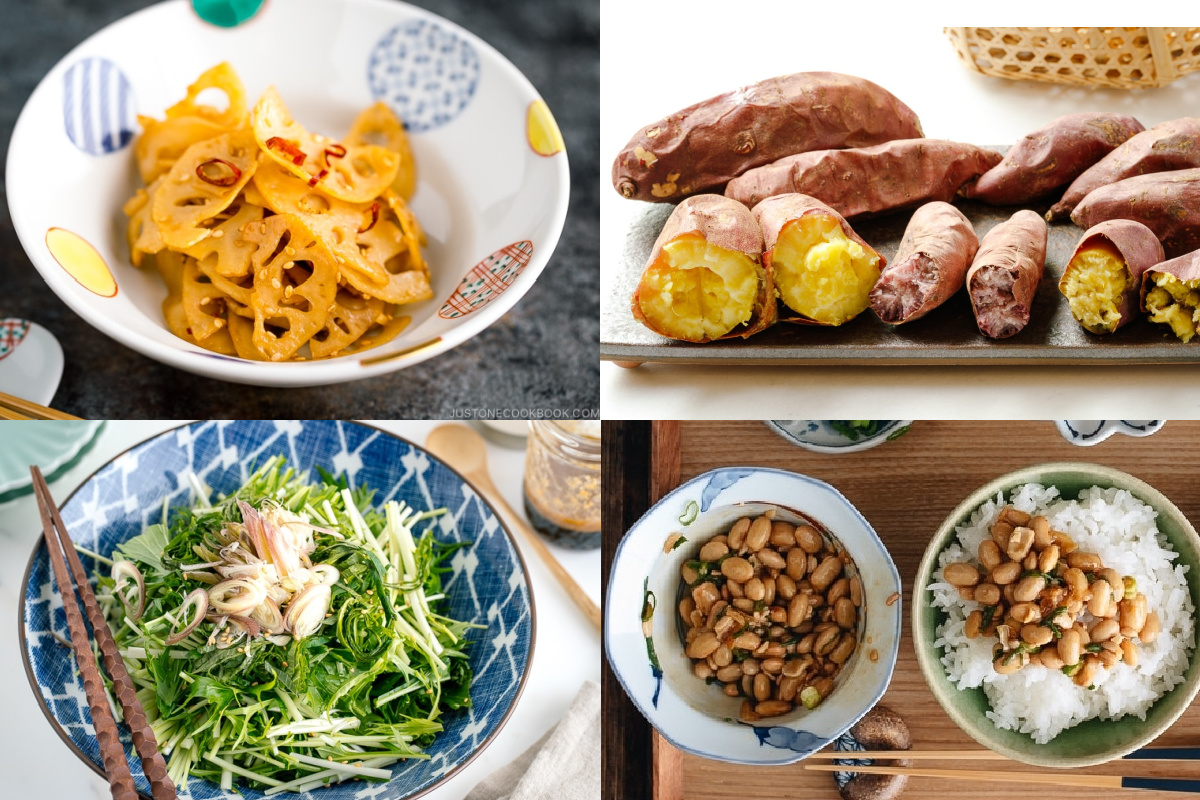
Children’s Day—Kodomo no hi (こどもの日)—is a national holiday observed every May 5th in Japan. On this day, the Japanese decorate the house and eat special foods wishing for children’s health and happiness. In this article, we’ll share with you how you can celebrate this special occasion with your family.
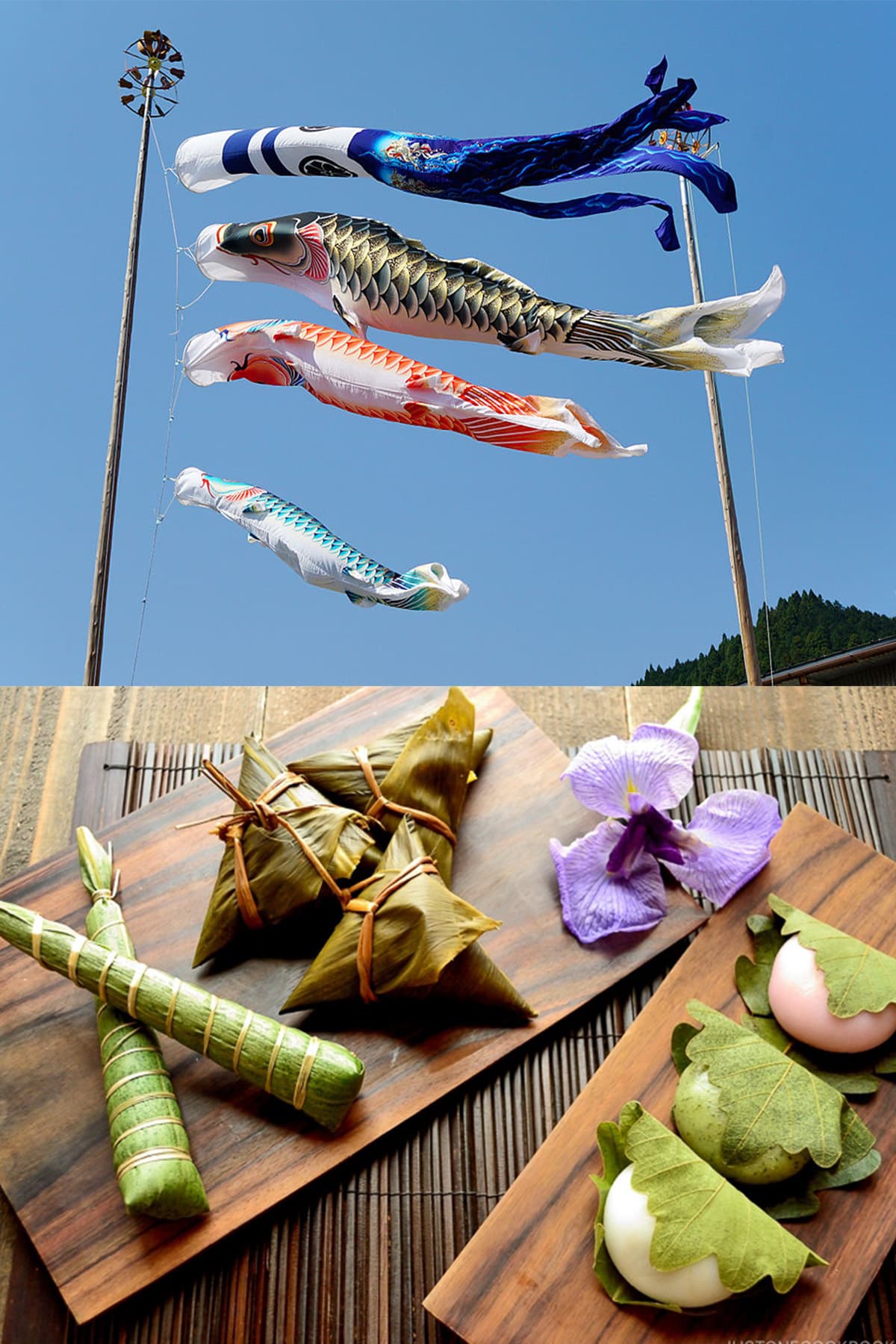
As a nation and people who cherish traditions, festivals are a Japanese way of commemorating all things that hold a special place in our lives. Soon after Hinamatsuri (Girl’s Day) on March 3rd, we transition quickly to Golden Week—and that leads us to Children’s Day, a day of celebration in Japan since ancient times.
That’s right, Children’s Day or Kodomo no hi (こどもの日) is on May 5 in Japan. On this national holiday, Japanese families come together to honor children for their individual strengths and to pray for health and happiness upon them.
Walking on the streets in Japan, you’ve probably spotted colorful fish-shaped flags flying in the sky from the balconies of residential houses. Let’s learn more about this festival and how you can celebrate it with young children at home.
The History of Children’s Day in Japan
The origin of Children’s Day in Japan dates back to the Nara Period (AD 710 to 794) when it was first known as Tango no Sekku (端午の節句)—which usually translated to Boys’ Day. Based on the seventh sign of the Chinese zodiac, it was a day to celebrate the perseverance, strength, and well-being of boys.
After the post-war constitution in 1948, the Tango no Sekku holiday was renamed Kodomo no Hi (Children’s Day). This holiday now includes girls and celebrates the health and happiness of all children, and expresses gratitude toward mothers.
Girl’s Day or Hinamatsuri (doll festival) is observed every March 3; however, it is not considered a public holiday.
How To Celebrate Kodomo no Hi (Children’s Day)
1. Fly “Koinobori” Streamers
The Japanese families fly carp-shaped “koinobori” streamers in their houses (usually in the backyard or on the balcony). Why carp? It’s from an old Chinese story of a carp swimming up a waterfall and turning into a dragon. In Japanese folklore, the carp symbolizes determination and strength and it represents the desire for boys to become brave and strong individuals.
Each carp/streamer represents a family member. Traditionally a large black carp known as “Magoi” representing the father, flies at the top of the pole. Then a red carp “Higoi” represents the mother right below the father. Then a blue carp represents the first son, followed by other boys in the family below.
🎏 You can buy koinobori streamers on Amazon.
2. Decorate Samurai Warrior (or Kintaro) Figures and/or “Kabuto” Helmet
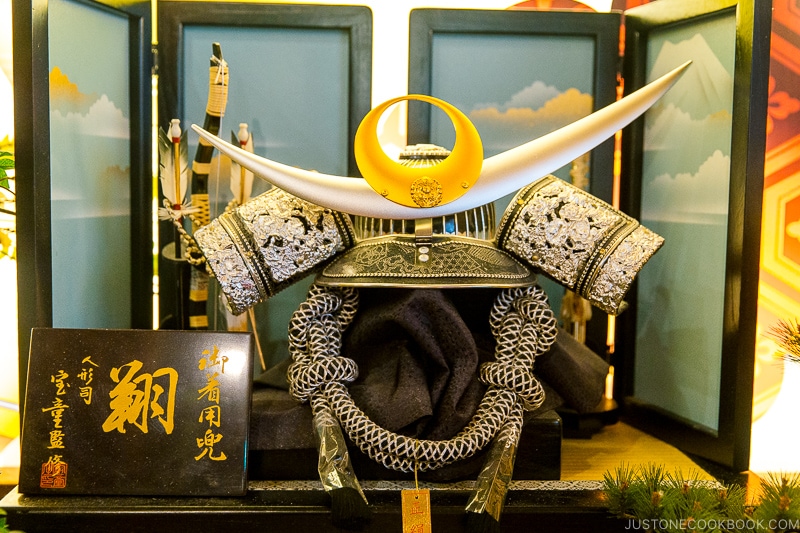
When a boy is born, his parents or grandparents usually buy (or pass down) their son/grandson Kabuto, samurai helmet, or/and Gogatsu Ningyo (samurai or Kintaro or Momotaro doll and his armaments). The Japanese families displayed them within their homes to inspire strength and bravery from the beginning of April until mid-May.
3. Eat Chimaki or Kashiwamochi
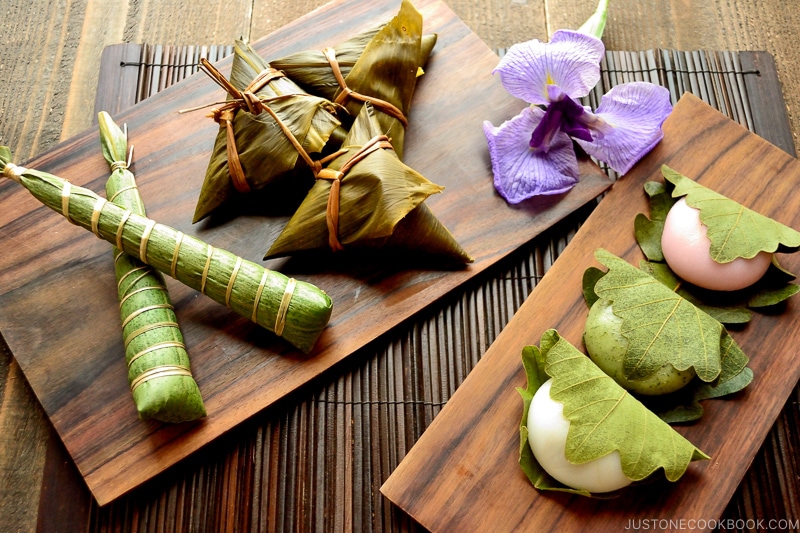
On Children’s Day, the Japanese in Kanto (Tokyo area) eat Kashiwa Mochi (柏餅), and the Japanese in Kansai (Osaka area) eat chimaki (粽).
Kashiwa mochi is a rice cake stuffed with red bean paste and wrapped in oak leaves that symbolize good fortune and prosperity (succession to the headship of a house). This is because the oak tree does not shed its old leaves until new ones have grown.
The custom of eating chimaki, or steamed glutinous rice dumplings wrapped in a bamboo leaf, came from Chinese zongzi (粽子). The Japanese version is a sweet dessert (wagashi), but we also eat Chinese-style savory dumplings filled with different combinations of meats and vegetables.
You can find these dumplings at grocery stores and Japanese sweets stores.
4. Decorate Iris at Home and Soak in Iris Bath
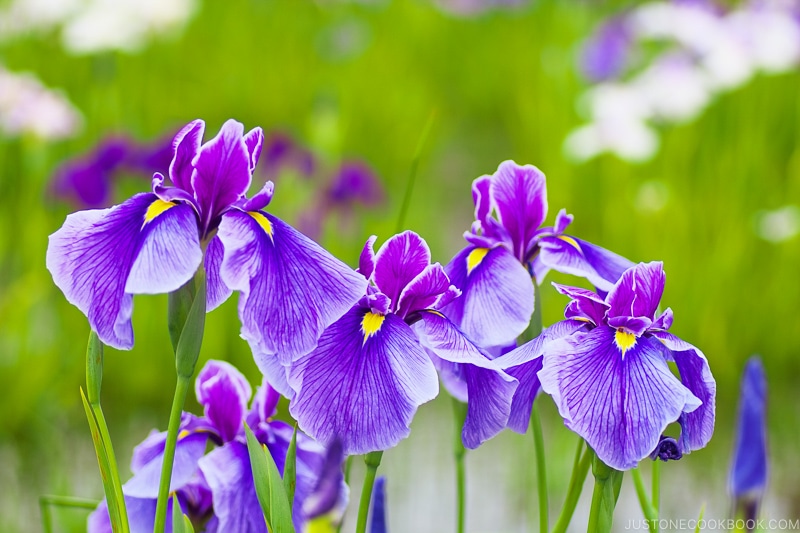
Iris blooms in early May and it’s decorated in the house to ward off evil. The Japanese also take baths filled with iris leaves on this day because the word Iris is shobu (菖蒲) in Japanese, and shobu has another meaning which is a battle. Therefore, samurai used to soak in an iris bath or shobuyu (菖蒲湯) before the battles.
Special Foods to Eat on Children’s Day
Japanese families with children usually celebrate Children’s Day at home with special dishes and home-cooked meals. Here are the recipes you can make for your children:
1. Kashiwa Mochi
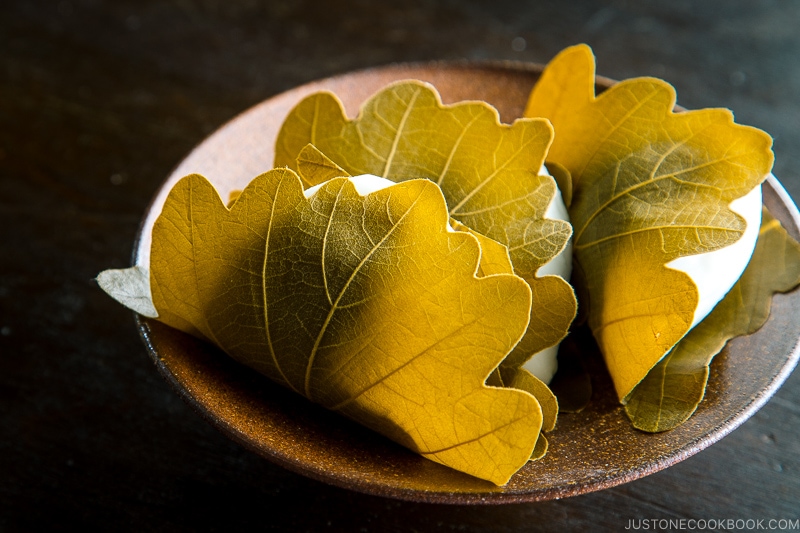
Kashiwa Mochi is a rice cake stuffed with red bean paste and wrapped in oak leaves that symbolize good fortune and prosperity. It’s a signature food that we eat on Children’s Day.
These sweet dumplings are available at grocery stores and Japanese sweets stores. If you see them at your local Japanese grocery store, don’t forget to try some as a snack!
2. Sekihan (Japanese Azuki Red Bean Rice)
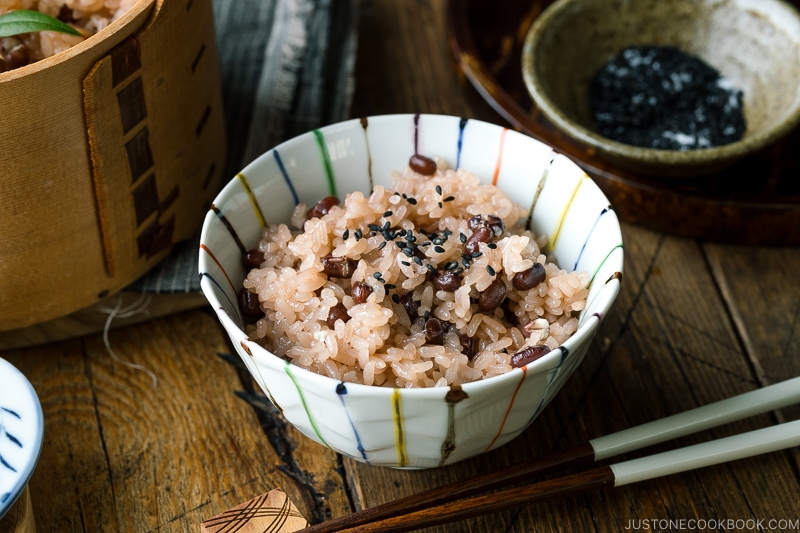
Sekihan, or steamed rice cooked with azuki red beans, is always served on happy occasions in Japan, and Children’s Day is not an exception.
3. Chirashi Sushi
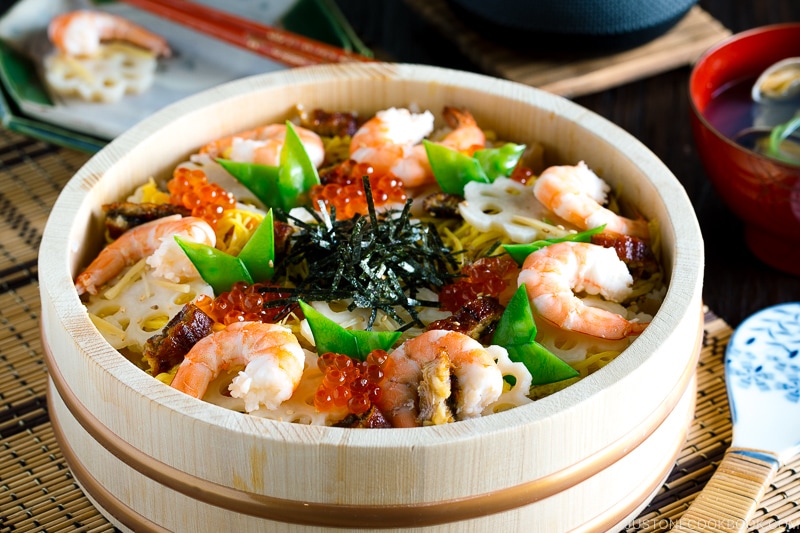
Chirashi Sushi is served on Children’s Day as well as Hinamatsuri (Girls’ Day) and other happy occasions. Children usually prefer chirashi sushi over sekihan (azuki red bean rice above) as it has more colorful ingredients on top.
4. Japanese Clear Clam Soup (Ushio-Jiru)
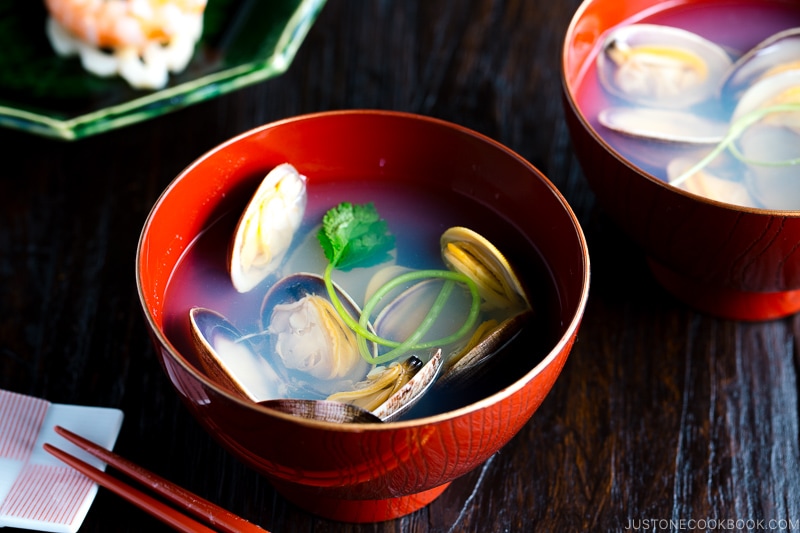
This is one of the most popular soups enjoyed in Japan! Made with seafood such as white fish or clams and seasoned with only salt and sake, it is packed with nutrients and umami. If you like miso, you can make Clam Miso Soup instead.
5. Chikuzenni (Nishime)
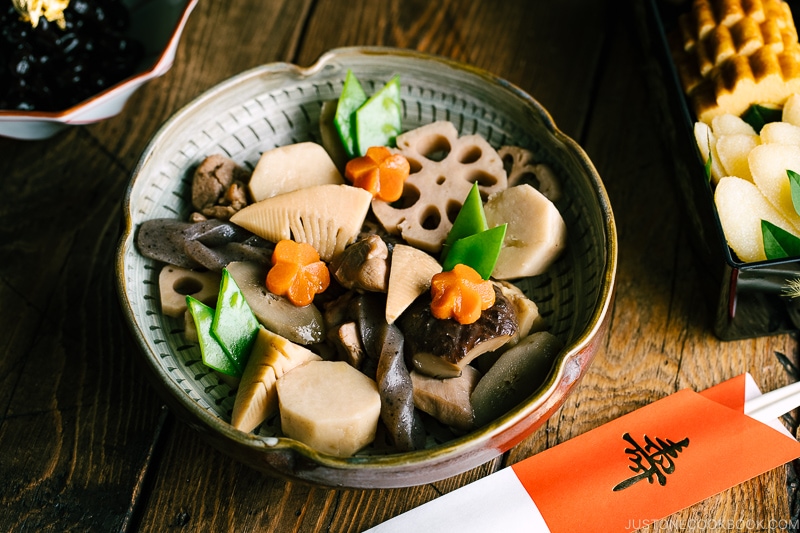
Chikuzenni or Nishime is a classic Japanese simmered dish in which root vegetables and chicken are cooked in a savory dashi broth. This can also be a side dish and you can make it ahead of time.
Staying Traditional?
Other dishes that are often served for traditional Tango no Sekku include:
- Bamboo shoot (Takenoko 筍) – Bamboo grows tall and straight, so eating bamboo symbolizes growth.
- Lotus Root (Renkon 蓮根) – Holes in lotus root are a symbol of an unobstructed view of the future.
- Red snapper (Tai 鯛) – Tai shares the same sound as medetai, or auspicious. Therefore grilled whole red snapper is served on celebratory occasions.
- Shrimp (Ebi 海老) – The red color symbolizes vitality.
- Skipjack tuna (Katsuo 鰹) – It sounds the same as Katsuo (勝男) meaning a man who won a victory.
- Yellowtail/Japanese amberjack (Buri ブリ) – Samurai and scholars used to change their names when they succeed in life. As buri also changes its name depending on its size, eating these fish symbolizes success in life.
Children-Friendly Menus…Because It’s Children’s Day!
I admit, the above dishes are more for adults and they are not necessarily children’s favorite dishes. In recent years, the Japanese started to prepare children’s favorite foods and include more colorful dishes for the celebration. So, we’ve got you covered!
6. Karaage (Japanese Fried Chicken)
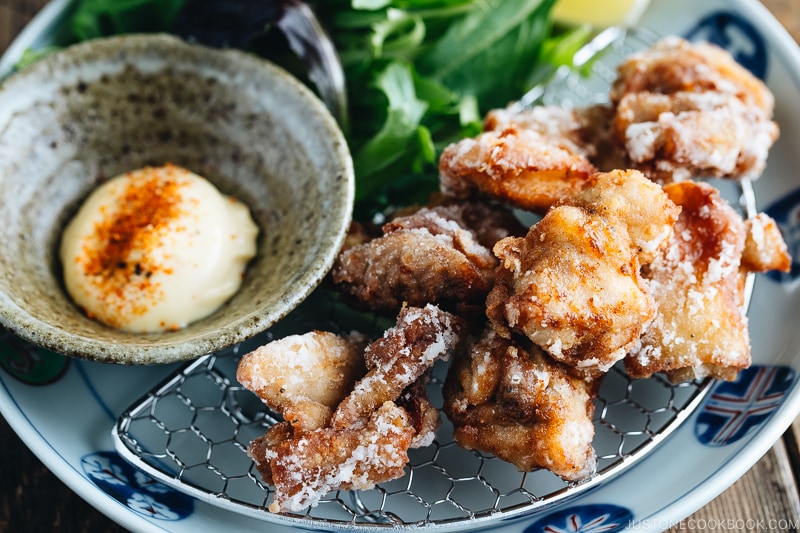
Karaage is Japanese fried chicken that is fried to perfection with a crisp texture on the outside, and super juicy and tender meat on the inside.
7. Fruit Sando
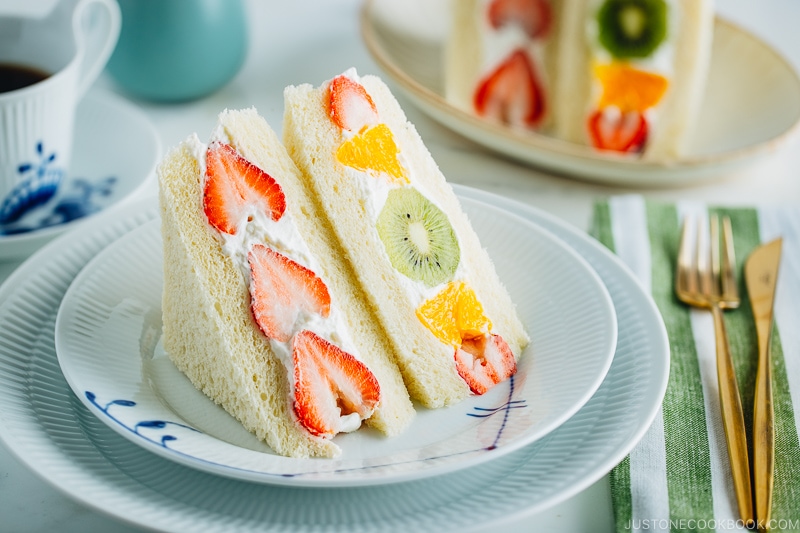
Since it’s springtime, you can also make a strawberry-filled fruit sandwich for the occasion. It’s a guaranteed hit!
8. Hambagu (Hamburger Steak)
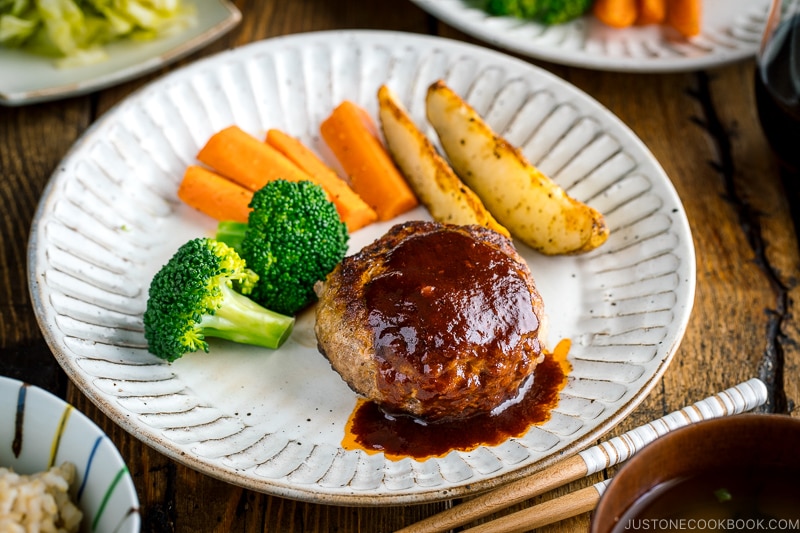
The Japanese children love Hambagu in their bento, family restaurant, and dinner menu. You can also make mini ones for a bite-size appetizer!
9. Ebi Fry (Japanese Fried Shrimp)
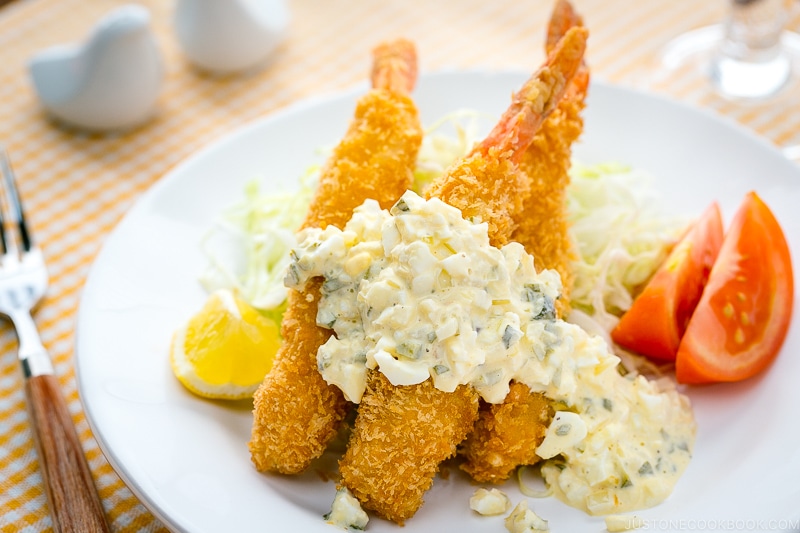
The children love shrimp, especially when it’s coated with crispy panko and deep-fried! Ebi Fry is a classic western style Japanese dish and a popular menu for Okosama Set (Children’s Meal) at family restaurants.
10. Japanese Potato Salad
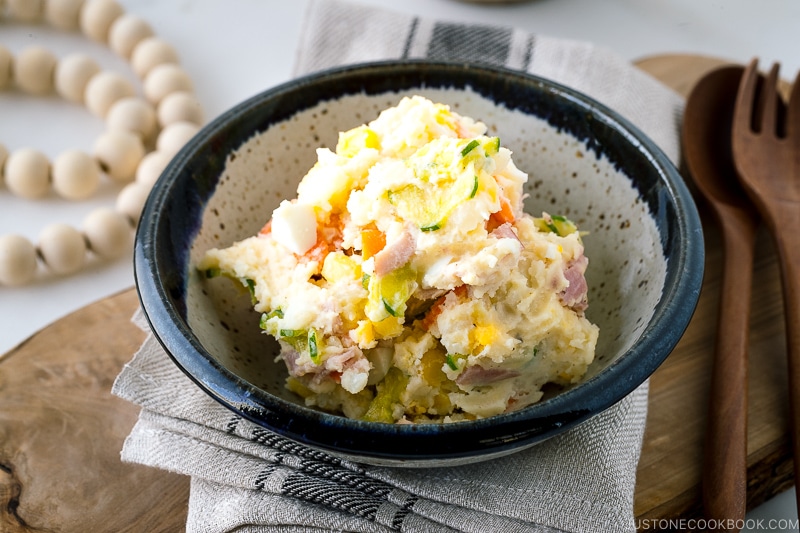
Last, but not least…I recommend a salad dish that children love in Japan. It is the popular Japanese potato salad!
For dessert, make sure to serve Kashiwa Mochi or check other dessert recipes on my blog!
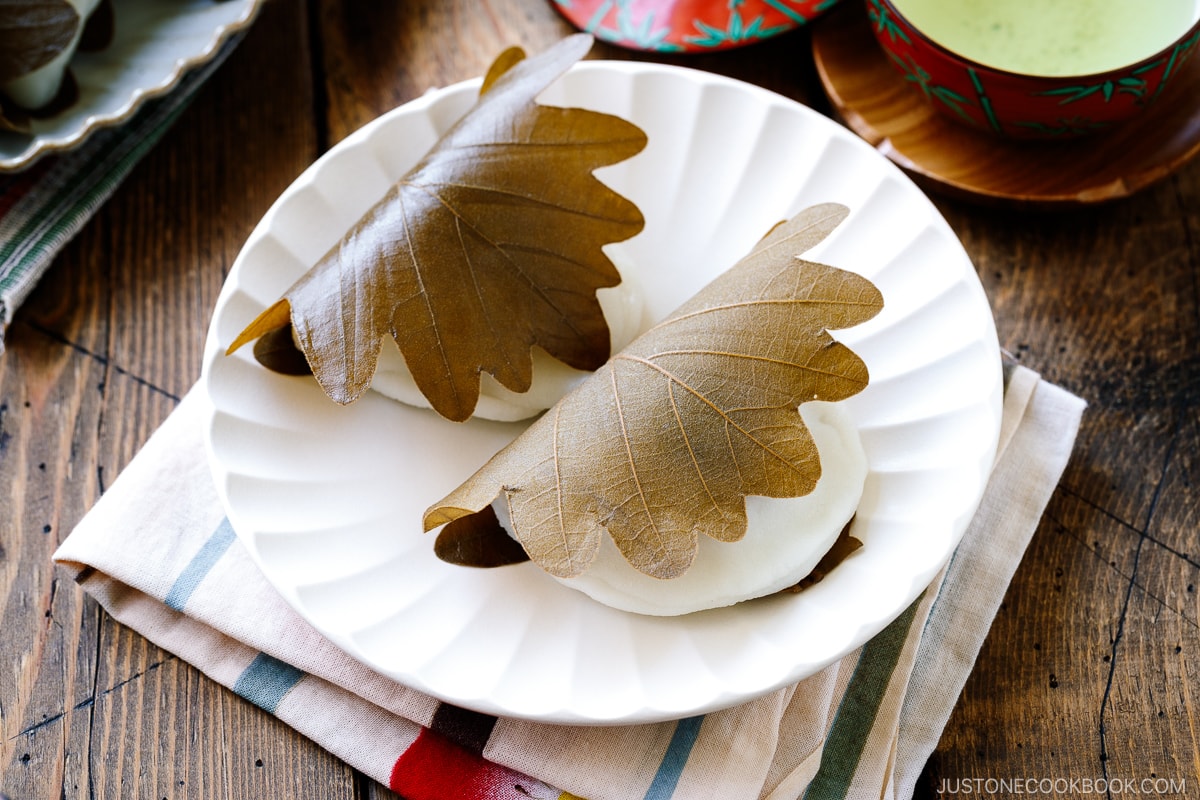
Children’s Books on Japanese Culture
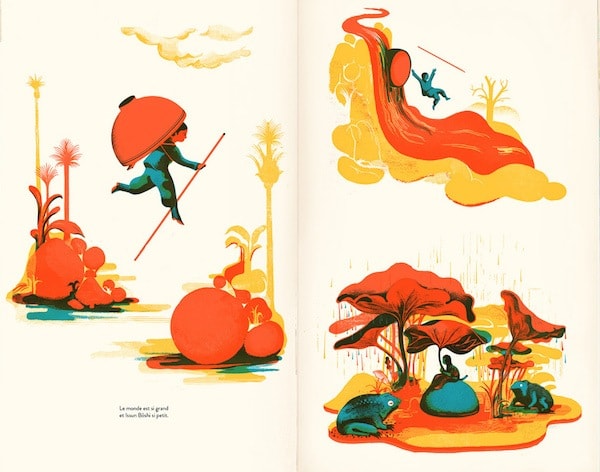
We’ve also curated a list of children’s books on Japanese culture which you can read with your little ones on this special day.
We hope you have a fun time celebrating Japanese Children’s Day. If you grew up in Japan, what are some of your fondest memories of Children’s Day? Please share in the comments below!
Wish to learn more about Japanese cooking? Sign up for our free newsletter to receive cooking tips & recipe updates! And stay in touch with me on Facebook, Pinterest, YouTube, and Instagram.
Editor’s Note: The post was originally published on April 29, 2017. It was updated with more helpful content on April 28, 2024.




